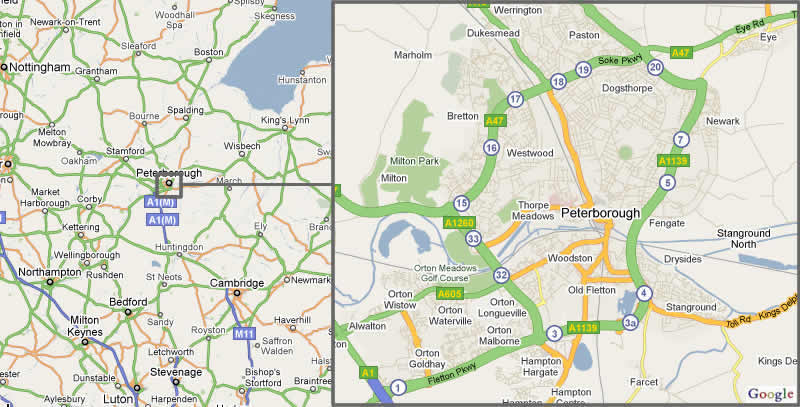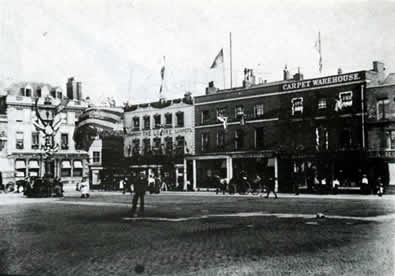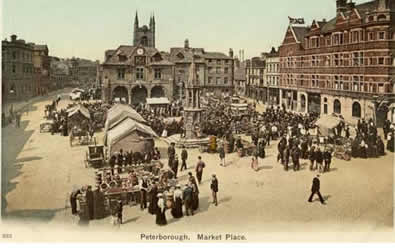PETERBOROUGH IN THE 16th AND 17th CENTURIES
Henry VIII closed all the monasteries and abbeys in England. In Peterborough the abbey was closed in 1539. However in 1541 the abbey was made a cathedral. Also in 1541 a school called the Kings school was founded.
Peterborough was now officially a city but it was a very small one even by the standards of the time. It may have had a population of about 1,500. By the late 17th century the population had probably grown to around 2,000.
The main industry in Peterborough was still wool manufacture. But there was also some malting and from the 17th century clay pipes were made in Peterborough.
Like all towns in those days Peterborough suffered outbreaks of plague. It struck in 1574, 1607, 1625 and 1665-67. Each time a significant part of the population died but Peterborough always recovered.
Mary Queen of Scots was buried in Peterborough Cathedral after her execution in 1587.
In 1643 during the civil war parliamentarian soldiers desecrated the cathedral. They disapproved of images in churches and so they destroyed paintings and stone carvings.
The old Guildhall was built in 1671.
PETERBOROUGH IN THE 18th CENTURY
During the 18th century Peterborough remained a very small market town. It was a focal point for the surrounding villages. It had no industries of any importance. It was the smallest city in England with a population of around 2,500-3,000. By 1801 the population of Peterborough had reached about 3,500.
However in the late 18th century Peterborough began to grow quite rapidly. The Napoleonic wars brought prosperity (there was a big demand for the town's goods). Furthermore 10,000 French prisoners of war were held in camps at Norman Cross.
In 1774 the first theatre was built in Peterborough. The Custom House was built in 1790. Also in 1790 an act of Parliament created a body of men called the Improvement Commissioners who were responsible for paving, cleaning and lighting the streets of Peterborough. (From 1795 the streets were lit with oil lamps).
PETERBOROUGH IN THE 19th CENTURY
The population of Peterborough continued to rise rapidly in the 19th century. By 1851 it was approaching 9,000. By 1871 it had passed 17,000.
Conditions in Peterborough improved during the 19th century. In 1821 an infirmary was built in the town and in 1830 Peterborough gained gas street lighting. In 1846 a corn exchange where grain could be bought and sold was built. St Peters Training College was built in 1856.
New industries appeared in Peterborough in the 19th century. An iron foundry opened in 1830. In the late 19th century there was an elastic webbing industry. Another important industry was brick making. On the other hand the old industry of clay pipe making died out by the end of the century.
The railway reached Peterborough in 1845. The railway led to a rapid increase in the population of the town. Then in 1874 Peterborough was given a corporation. They set about creating a piped water supply and laying down sewers. By 1880 both were complete. The first public library in Peterborough opened in 1892.
|



